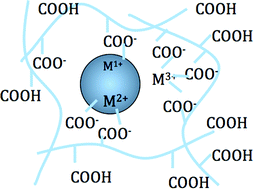A review of polyelectrolyte modifications in conventional glass-ionomer dental cements
Abstract
Glass-

* Corresponding authors
a Advanced Prosthodontics Program, Herman Ostrow School of Dentistry, University of Southern California, Los Angeles, CA, USA
b School of Engineering and Materials Science, Queen Mary University of London, London, UK
c
Department of Prosthetic and Restorative Dentistry, College of Dentistry, The Ohio State University, 305 W. 12th Ave, Room 3001Q, Columbus, OH, USA
E-mail:
schricker.1@osu.edu
Fax: +614-292-9422
Tel: +614-688-3367
Glass-

 Please wait while we load your content...
Something went wrong. Try again?
Please wait while we load your content...
Something went wrong. Try again?
A. Moshaverinia, N. Roohpour, W. W. L. Chee and S. R. Schricker, J. Mater. Chem., 2012, 22, 2824 DOI: 10.1039/C2JM14880C
To request permission to reproduce material from this article, please go to the Copyright Clearance Center request page.
If you are an author contributing to an RSC publication, you do not need to request permission provided correct acknowledgement is given.
If you are the author of this article, you do not need to request permission to reproduce figures and diagrams provided correct acknowledgement is given. If you want to reproduce the whole article in a third-party publication (excluding your thesis/dissertation for which permission is not required) please go to the Copyright Clearance Center request page.
Read more about how to correctly acknowledge RSC content.
 Fetching data from CrossRef.
Fetching data from CrossRef.
This may take some time to load.
Loading related content
